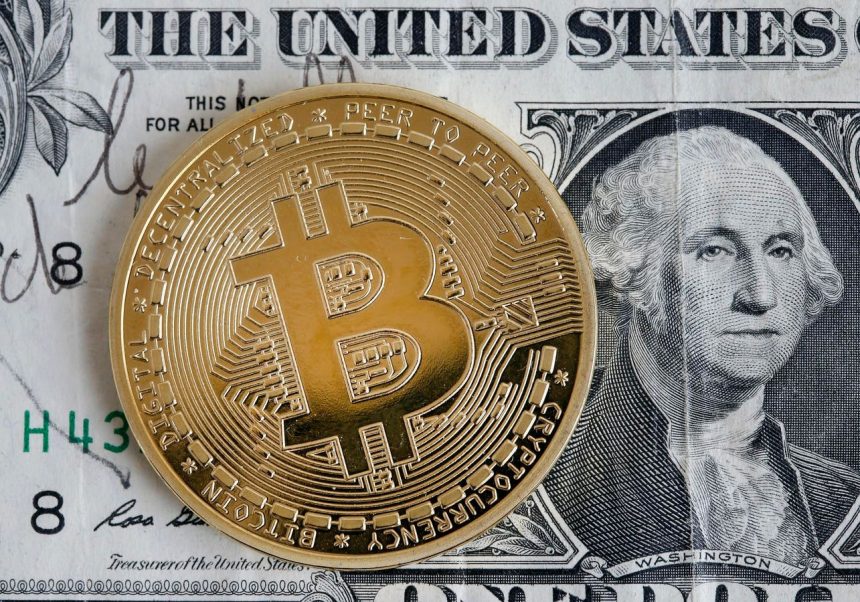The worldwide financial system, overseen by conventional banks, asset managers, and financial institutions serving as gatekeepers, functions solely within regular business hours and enforces numerous restrictions on customers. Money transfers, especially international ones, can take days to complete and often require SWIFT codes, routing numbers, and other complex identifiers. Trade settlements may take 1-3 days, with funds held by the financial institutions. These limitations are akin to trying to run a modern Formula 1 race on a horse-drawn carriage track – the legacy systems and infrastructure, built for a bygone era, struggle to keep pace with today’s financial needs. What’s holding things back? Different countries have their own rules, and getting all these financial institutions to work together smoothly is a real challenge.
In contrast, crypto platforms operate 24/7 and enable self-custody of funds. Crypto finance and DeFi facilitate instant, borderless peer-to-peer (P2P) transactions, creating a financial world that bypasses traditional centralized institutions. The increasing adoption of blockchain and digitized financial services is driving the DeFi market, which is expected to reach $450 billion by 2030, growing at a CAGR of 46%. Despite its multi-billion-dollar market size, the DeFi sector is only just starting to explore its potential compared to over one hundred trillion dollars in global bond markets alone, suggesting there is still a long way to go.
Innovations Boosting the DeFi ecosystem
Stablecoins – Digital dollars, pegged to fiat (usually the dollar), offer the stability of fiat with the flexibility of crypto; leading players are Tether (USDT), USD Coin (USDC), and Dai (DAI).
Lending and Borrowing Protocols – Facilitate peer-to-peer lending and borrowing of digital assets to help crypto holders earn returns on their holdings; notable players include Aave, Compound, and MakerDAO.
Yield generation mechanisms – enable crypto asset holders to maximize returns through strategies such as staking, liquid staking, and yield farming; players include Lido, Rocket Pool, and Curve Finance.
Cross-chain bridge platforms – Facilitate asset transfers between different blockchain ecosystems and help investors explore various networks to optimize returns; leading examples include Multichain (formerly Anyswap), Wormhole, and Hop Protocol.
Decentralized exchanges (DEXs) – Enable peer-to-peer transactions while handling billions in daily trading volume: Uniswap, SushiSwap, and PancakeSwap.
Maximize Asset Returns
Staking is when crypto holders lock their assets to participate as a node or validator on a blockchain. It is essentially putting your skin in the game – making a security deposit to validate blockchain transactions ethically by the network rules and help secure the network. As compensation, stakers earn extra coins, usually the same cryptocurrency they staked. The major drawback of staking, however, is illiquidity. Staked funds are locked up and cannot be traded or used for other investments during the staking period. Proof-of-Stake networks like Ethereum 2.0, Cardano, and Solana use these committed assets to secure the network and validate transactions.
Liquid staking resolves the illiquidity of staked assets by generating Liquid Staking Tokens (LSTs) that represent the cryptocurrency held in the Liquid Staking Protocol. These minted LSTs can be deployed on other protocols within the DeFi ecosystem to earn additional yields while the original staked crypto continues accruing staking rewards. This enables cryptocurrency owners to retain their ability to readily access funds and explore other investment options while still enjoying staking benefits. It’s like having your cake and eating it, too – your cryptocurrency is staked, yet you have a token available for use. Imagine if you could use a proxy for your funds locked in a CD to engage in other financial activities while the actual money remains in the fixed deposit earning interest. Crypto makes this hypothetical scenario real, through liquid staking.
The minted LSTs can be restaked/deposited on Liquid Restaking Protocols, which in turn create Liquid Restaking Tokens (LRTs), allowing the asset holder to earn additional returns. Some advanced protocols work directly with the underlying blockchain and create new tokens native to their systems, i.e., native Liquid Restaking Tokens (nLRTs) and recursive, composite, or leveraged liquid staking tokens. These tokens enable asset holders to earn both traditional Proof of Stake rewards and additional staking rewards.
With a rapid pace of innovations in the DeFi ecosystem, platforms with unique implementations of liquid staking continue to emerge. One such platform is YieldNest.
YieldNest revolutionizes the staking landscape with its innovative liquid restaking products, designed for optimal returns and simplified user experience. By utilizing Liquid Restaking Tokens (LRTs) and Native Liquid Restaking Tokens (nLRTs), YieldNest transforms traditionally illiquid staked assets into liquid, yield-bearing tokens. This allows users to earn rewards from Actively Validated Services (AVS) while maintaining liquidity. Their app offers advanced risk management, which ensures funds are secure and returns are maximized. YieldNest provides controlled exposure to selected AVS categories, catering to both novice and experienced users.
While some platforms focus on maximizing returns through liquid staking, others are innovating to boost the utility of liquid staking tokens. Bracket is at the forefront of this innovation with its Liquid Staked DeFi approach.
Bracket is revolutionizing Liquid Staked DeFi, enhancing the utility of Liquid Staking Tokens (LSTs) and Liquid Restaking Tokens (LRTs). The platform introduces $brktETH, a composite token backed by a diverse LST treasury, improving collateral efficiency and offering expanded earning opportunities. Users can stake LSTs and LRTs to earn rewards, benefiting from both passive and active trading strategies. With a consistent user interface, Bracket simplifies strategy management, making advanced DeFi more accessible. The platform addresses LST maturity and non-fungibility challenges while offering pooled LSTs, margin lending, and collateral management. Bracket’s innovative approach includes a points system, ETH rewards, and LRT points for early participants. Supported by Binance Labs and leveraging on-chain derivative expertise, Bracket democratizes access to sophisticated financial strategies.
Liquid staking is performing financial alchemy, providing unprecedented flexibility to asset holders. As the industry grows, traditional finance and non-natives are increasingly engaging with crypto, bringing both challenges and opportunities to DeFi.
Crypto Exchanges
The January 2024 launch of Spot Bitcoin Exchange-Traded Funds (ETFs), accompanied by increasing institutional interest, is transforming the cryptocurrency market. As of July 2024, these investment funds (ETFs) collectively hold approximately 3% of the total Bitcoin supply, concentrating a significant portion of assets under a few TradFi asset managers. This centralization trend contrasts with the decentralized ethos of DeFi and DEXs, sparking a debate within the cryptocurrency community, including industry stakeholders – Bitcoin advocates, blockchain developers, and retail investors, about how to balance mainstream adoption with the original vision of decentralized finance. In response, the industry is innovating to balance institutional participation with decentralization principles.
Cryptocurrency exchange StealthEX, for instance, actively addresses the centralization issue by prioritizing user control and privacy. This means that user personal data and funds aren’t being stored by the platform, ensuring an experience that is as secure and transparent as possible. At the same time, it doesn’t require registration to make entry points accessible, even for those who don’t have sophisticated technology knowledge. Users can access easy cross-chain transactions with over 1,500 assets without needing to create an account, connect a wallet, or disclose any personal information, and be sure no third party owns their data or money.
Regulatory Landscape
The DeFi ecosystem’s advancements such as staking, liquid staking, and DEXs offer new opportunities but also introduce risks. Restaking addresses liquidity issues but amplifies systemic risks due to interconnected minted tokens. The space faces regulatory uncertainties, smart contract vulnerabilities, and questions about yield sustainability. The complex and evolving regulatory framework, which varies across jurisdictions, adds further risk to the ecosystem due to a lack of clear guidelines.
Continuing Evolution of Crypto Finance
A hot bed of innovations, DeFi provides a transformative ecosystem for user-centric financial operations. Leveraging blockchain and smart contracts it is refashioning finance with decentralized exchanges, lending protocols, yield farming, liquid staking, and more. These products underscore DeFi’s potential to solve complex financial challenges while creating groundbreaking opportunities for users. Traditional financial institutions are beginning to take notice and enter the space, starting the convergence of old and new finance with potential implications for the global financial system.
Read the full article here
















